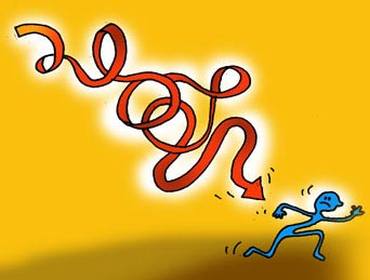
When looking at fund returns, avoid looking at just the past 12 months' performance, says Sanjay Kumar Singh.
Illustration: Dominic Xavier/Rediff.com
With the tax-saving season having begun, many people are thinking of investing in equity-linked saving schemes (ELSS), where they can get equity-like returns along with the benefit of tax saving.
In December 2016, inflows into this category stood at Rs 907 crore, up 69.22 per cent over the corresponding month of the previous year.
Here is a look at some of the common errors investors need to avoid committing while investing in these funds.
Many people start investing in ELSS funds only towards the end of the financial year, when the time for showing proof of investment is upon them.
This sometimes leads to a cash crunch in the last quarter of the financial year.
It also forces investors to invest a lump sum amount.
If the markets are up, they end up purchasing units at higher valuations.
"Systematic investment plans (SIPs) help to maintain adequate personal liquidity throughout the year and also help to avoid timing the market," says Lakshmikanth Reddy, vice-president and portfolio manager-Franklin Equity, Franklin Templeton Investments-India.
Investors who have the money in hand may invest a lump sum amount at the start of the financial year and do a systematic transfer plan (STP).
Sometimes, investors don't pay attention to the fund's risk profile and ensure that it matches their risk-bearing ability.
Some ELSS funds are large-cap oriented while others have a mid- and small-cap tilt.
The former tend to be less volatile than the latter.
If you choose a fund just by looking at past returns and without examining the underlying portfolio, you could end up with one that is too volatile for your liking.
"For a cautious, elderly kind of investor who is close to retirement, a large-cap oriented ELSS fund would be better suited," says P V K Mohan, head equities, Principal PNB Asset Management Company.
In case of young investors too, their first exposure to equity funds tends to be through a tax-saver fund.
"Such investors too may have limited appetite for mid- and small-cap oriented funds," says Vishal Dhawan, chief financial planner, Plan Ahead Wealth Advisors.
An experienced investor who has adequate large-cap exposure may opt for a mid- and small-cap oriented fund.
When looking at fund returns to make a choice, investors tend to be heavily influenced by the past 12 months' performance.
But today's chart-topper may not necessarily be the best bet for you.
Instead, opt for a consistent fund.
Mohan suggests comparing funds' returns with their benchmark or category average for different calendar years over the past five years or so.
"This will give you an idea of how the fund has performed in different market phases," he says.
Rolling returns are also a good measure of consistency.
Measures of risk-adjusted returns, like Sharpe and Treynor ratio, can also help you make a better choice.
Investors tend to pull their money out of ELSS funds as soon as the three-year lock-in ends.
Since the underlying asset class here is equities, stay invested for at least 5 to 7 years to garner good returns.
- Avoid investing in a new fund every year. This will only create excessive clutter in your portfolio.
- Try to pick a fund with an expense ratio that is below average, since money saved is money earned.
- Do SIP only for one year. Next year, do a fresh SIP after calculating your Section 80C requirements.
- If your salary rises, and with it your EPF contributions, you may need to lock less money in these funds.











